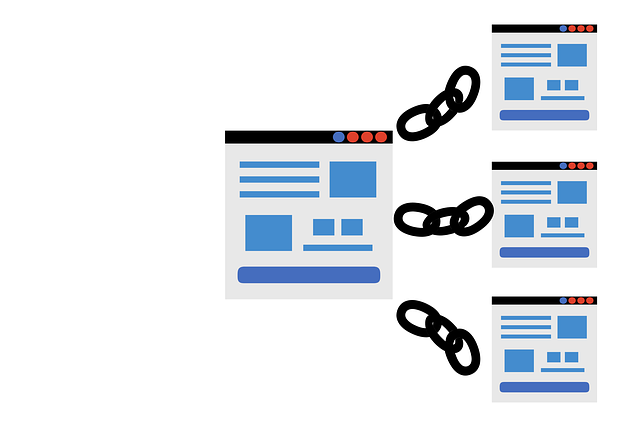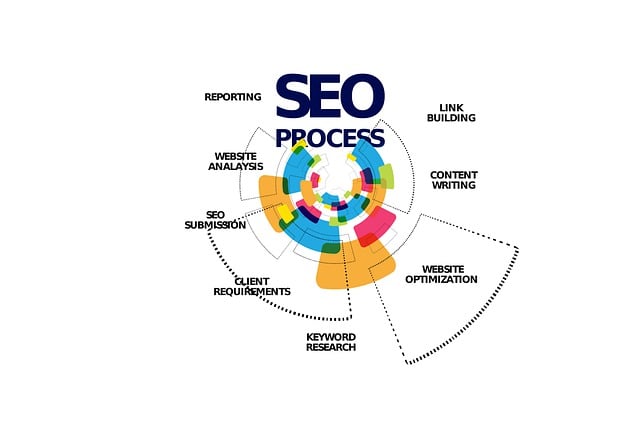Google Algorithm Update: What It Means for Your SEO Strategy
In the ever-evolving world of digital marketing, staying ahead of Google’s algorithm updates is not just an option—it’s a necessity. Recently, Google rolled out its latest algorithm update, and its ripple effects are already being felt across the SEO landscape. In this comprehensive guide, we’ll explore the key changes introduced by this update, what they mean for your website’s performance, and how you can adjust your SEO strategy to thrive in this new era of search. Whether you’re a seasoned SEO veteran or a newcomer trying to understand the basics, this blog post will provide you with actionable insights to keep your digital presence robust and future-proof.
Understanding Google’s Algorithm Updates
Google’s algorithm is the backbone of its search engine, designed to sift through billions of web pages and return the most relevant and high-quality results for any given query. Over the years, Google has released multiple updates—some minor tweaks and others sweeping overhauls—that have reshaped the digital landscape.
The Evolution of Google’s Algorithms
- Early Days: In its early days, Google’s algorithm relied heavily on factors like keyword density and basic link metrics. These early signals, while effective at the time, were easily manipulated by SEO practitioners.
- The Rise of Quality Signals: With updates like Panda, Penguin, and Hummingbird, Google began to emphasize quality over quantity. These updates penalized low-quality content, spammy backlinks, and keyword stuffing, and instead rewarded sites that provided genuine value to users.
- User Experience as a Priority: More recent updates have focused on user experience, mobile optimization, page speed, and overall site usability. Google’s mission has always been to provide the best possible experience for its users, and its algorithm is constantly evolving to reflect that commitment.
What’s New in the Latest Algorithm Update?
Google’s newest algorithm update builds on its long-standing commitment to quality and user experience while introducing several key changes that have significant implications for SEO. Here are the major components of the update:
1. Enhanced Content Quality Evaluation
One of the standout features of this update is its improved ability to evaluate the quality of content. Google’s machine learning models have become better at understanding the context, relevance, and depth of the content on your site. This means that superficial or thin content is now more likely to be demoted, while comprehensive, well-researched articles are rewarded.
- Contextual Relevance: The update emphasizes content that provides meaningful context and depth. Pages that simply reiterate common knowledge without added insight may not perform as well.
- User Engagement Metrics: Engagement signals—such as time on page, bounce rate, and click-through rates—play an even larger role in determining content quality. Sites that engage users effectively are more likely to see improved rankings.
2. Improved Mobile-First Indexing
While Google has been pushing mobile-first indexing for several years, the latest update takes this commitment a step further. With more searches occurring on mobile devices than ever before, Google now places even greater importance on mobile usability and responsiveness.
- Responsive Design: Websites that are optimized for mobile devices, with fast loading times and intuitive navigation, will see a boost.
- Mobile-Only Considerations: Some elements of the update are specifically tailored for mobile search, meaning that desktop-centric sites might need to reassess their mobile performance to remain competitive.
3. Enhanced E-A-T Signals
Expertise, Authoritativeness, and Trustworthiness (E-A-T) have become key pillars in Google’s ranking criteria. The latest update refines how these signals are assessed, particularly for websites that deal with sensitive topics such as health, finance, or legal advice.
- Author Credentials: Displaying clear author information and credentials is increasingly important. Google favors content that is written by experts in the field.
- Trust Signals: Secure sites (HTTPS), transparent contact information, and a strong online reputation are more critical than ever.
4. Semantic Search Improvements
Google’s ability to understand natural language and the semantics behind search queries has seen a significant upgrade. The update allows Google to better interpret the intent behind a query and match it with content that addresses that intent directly.
- Natural Language Processing (NLP): Advances in NLP mean that Google can now analyze long-tail queries and conversational language with higher accuracy.
- Context Over Keywords: Rather than relying solely on exact keyword matches, the algorithm now considers the broader context of the content and its relevance to user queries.
5. User Experience and Core Web Vitals
Building on previous updates, Core Web Vitals have now taken center stage as a critical component of the ranking algorithm. These metrics, which focus on page loading speed, interactivity, and visual stability, are essential for delivering a positive user experience.
- Page Speed: Faster loading times are not just about keeping users happy; they are also a key ranking factor.
- Interactivity and Stability: Metrics like First Input Delay (FID) and Cumulative Layout Shift (CLS) are now more influential. Websites that offer a seamless, glitch-free experience are rewarded.
How the Latest Update Affects Your SEO Strategy
With these major changes, it’s clear that the latest Google algorithm update is designed to favor websites that prioritize quality, usability, and trustworthiness. Here’s what these changes mean for your SEO strategy:
1. Prioritize High-Quality Content
The update reinforces the idea that content quality is paramount. To thrive in this environment, your content must not only be informative but also engaging and original.
- In-Depth Analysis: Ensure that your content goes beyond surface-level information. Provide detailed analysis, expert insights, and actionable advice.
- Regular Updates: Keep your content fresh and up-to-date. Outdated information can hurt your credibility and rankings.
- User-Centric Approach: Write with your audience in mind. Understand their needs and questions, and tailor your content to answer them comprehensively.
2. Optimize for Mobile
Given the increased emphasis on mobile-first indexing, optimizing your website for mobile users is no longer optional—it’s critical.
- Responsive Design: Invest in a mobile-friendly website design that adapts seamlessly to different screen sizes.
- Accelerated Mobile Pages (AMP): Consider implementing AMP to improve load times and user experience on mobile devices.
- Mobile Usability Audits: Regularly test your site on various mobile devices to identify and fix any usability issues.
3. Strengthen Your E-A-T Profile
As Google continues to prioritize E-A-T, building and showcasing your expertise is essential, especially if your site deals with topics that require high levels of trust.
- Showcase Credentials: Make sure that author bios are detailed and highlight the expertise and experience of your content creators.
- Secure Your Site: Ensure that your website is fully secured with HTTPS and that you follow best practices for data protection.
- Build Reputation: Engage with your audience through testimonials, case studies, and partnerships with reputable organizations to build a robust online reputation.
4. Embrace Semantic SEO
With the evolution of semantic search, your SEO strategy should shift from a strict focus on keywords to a broader approach that emphasizes context and meaning.
- Topic Clusters: Organize your content into topic clusters that address various aspects of a subject in depth. This helps search engines understand the context of your content.
- Natural Language: Write in a natural, conversational tone that aligns with how people speak and search. This not only improves readability but also enhances semantic relevance.
- Structured Data: Use schema markup to provide search engines with additional context about your content, such as product information, reviews, and event details.
5. Improve Core Web Vitals
User experience is at the heart of this update. Enhancing your Core Web Vitals is a practical way to not only boost your rankings but also to keep your visitors engaged.
- Speed Optimization: Use tools like Google PageSpeed Insights to identify and fix issues that slow down your site.
- Interactive Elements: Ensure that interactive elements on your site, such as buttons and forms, respond quickly and reliably.
- Visual Stability: Make design adjustments to prevent unexpected layout shifts that can frustrate users.
Actionable Steps to Adapt Your SEO Strategy
Now that we understand the key changes and their implications, here are some actionable steps you can take to adapt your SEO strategy to Google’s latest algorithm update:
Step 1: Conduct a Comprehensive Site Audit
Before making any changes, conduct a thorough audit of your website. Use tools like SEMrush, Ahrefs, or Google Search Console to assess your current performance. Identify areas that need improvement, such as content quality, mobile responsiveness, and technical SEO issues.
- Content Analysis: Evaluate your existing content to see if it meets the new quality standards. Look for thin content, outdated information, or posts that lack depth.
- Technical Health: Check for broken links, slow-loading pages, and other technical issues that could affect user experience.
- Mobile Usability: Test your site on multiple devices to ensure it provides a seamless mobile experience.
Step 2: Revamp Your Content Strategy
Based on your audit findings, develop a revised content strategy that aligns with the new algorithm parameters.
- Content Refresh: Update or remove outdated content. Enhance posts with additional insights, updated statistics, and expert opinions.
- New Content Creation: Focus on creating in-depth, long-form content that addresses your audience’s questions and pain points. Use visuals, infographics, and videos to enrich your posts.
- User Intent: Optimize your content around user intent. Understand what your audience is looking for and ensure that your content provides clear, actionable answers.
Step 3: Enhance Mobile Performance
Given the mobile-first emphasis, ensure that your website is fully optimized for mobile users.
- Responsive Design: If your site isn’t already responsive, work with your web development team to redesign your site.
- Testing: Use tools like Google’s Mobile-Friendly Test to identify issues and implement fixes.
- AMP Implementation: Consider adopting Accelerated Mobile Pages (AMP) for critical content pages to further improve load times.
Step 4: Boost Your E-A-T
Work on improving your site’s credibility and trust signals, which are now more crucial than ever.
- Expert Contributors: Involve recognized experts in your niche for content creation or consultation.
- Transparency: Include clear, accessible information about your company, team, and content creation process.
- Security Measures: Regularly update your security protocols, maintain SSL certificates, and monitor for any vulnerabilities.
Step 5: Optimize for Semantic Search
Adjust your keyword strategy to embrace semantic search and natural language processing.
- Long-Tail Keywords: Focus on long-tail keywords and conversational phrases that reflect how your audience actually searches.
- Topic Clusters: Develop content clusters that comprehensively cover a subject, with a central pillar page supported by related articles.
- Structured Data: Implement schema markup to provide Google with clear signals about the context of your content.
Step 6: Monitor and Adapt
SEO is not a one-time project but an ongoing process. With Google’s algorithms continually evolving, it’s essential to monitor your site’s performance and be ready to adapt.
- Analytics Tools: Use Google Analytics, Google Search Console, and third-party SEO tools to track changes in traffic, engagement, and rankings.
- Regular Reviews: Schedule periodic reviews of your SEO strategy to identify what’s working and what needs adjustment.
- Stay Informed: Follow industry news, subscribe to reputable SEO blogs, and join digital marketing communities to stay updated on future algorithm changes and best practices.
The Bigger Picture: Why This Update Matters
Google’s latest algorithm update isn’t just another technical tweak—it’s a clear signal of the direction in which search is heading. At its core, the update is designed to ensure that users receive the best possible results: high-quality, relevant content that delivers a seamless, enjoyable experience.
A Shift Towards User-Centric SEO
The update reinforces Google’s commitment to user-centric SEO. It pushes websites to prioritize the needs of their visitors, ensuring that content is not only optimized for search engines but also genuinely valuable for users. This shift has profound implications for businesses:
- Enhanced User Satisfaction: By prioritizing content quality and user experience, businesses can expect higher engagement and improved conversion rates.
- Long-Term Trust: Websites that invest in quality content and robust user experience build long-term trust with their audience, which in turn can lead to higher customer loyalty and repeat visits.
- Competitive Advantage: As more sites scramble to adapt, those that align their strategies with these new priorities will stand out in search results, enjoying sustained organic traffic.
A Wake-Up Call for Digital Marketers
For digital marketers and SEO professionals, the update serves as a wake-up call to reexamine long-standing strategies. Tactics that may have worked in the past, such as keyword stuffing or low-quality backlink schemes, are now not just outdated—they can actively harm your site’s performance. The focus is clearly on authenticity, relevance, and user engagement.
- Invest in Quality: Now more than ever, quality trumps quantity. Investing in well-researched content, superior website design, and genuine user engagement is the path forward.
- Ethical SEO: The update reinforces that ethical, White Hat SEO practices are not only the right approach but also the most effective in today’s competitive landscape.
- Continuous Improvement: SEO is a dynamic field. Staying informed about updates like this one and continuously optimizing your strategy is essential for long-term success.
Preparing for Future Algorithm Updates
While it’s impossible to predict every change that Google will make, there are strategies you can adopt to prepare for future updates and maintain your site’s competitive edge:
Build a Resilient SEO Foundation
- Focus on User Experience: Prioritize website speed, mobile usability, and engaging content. These elements are likely to remain critical as Google evolves.
- Regular Audits: Continually assess your site’s performance using comprehensive audits to identify and address weaknesses before they become critical issues.
- Quality over Quantity: Avoid shortcuts that promise quick gains but might lead to penalties later. Invest in strategies that build long-term value and trust.
Stay Agile and Adaptable
- Monitor Trends: Keep an eye on industry news and updates from Google. Being proactive about changes can help you pivot your strategy before major shifts impact your rankings.
- Test and Learn: Use A/B testing and other methods to experiment with new tactics. Learning what works for your audience and industry can help you stay ahead of the curve.
- Community Engagement: Participate in forums, webinars, and conferences to learn from peers and experts. Sharing insights and experiences can be invaluable as you navigate the evolving SEO landscape.
Final Thoughts
Google’s latest algorithm update is more than just a technical change—it’s a strategic signal that quality, user experience, and genuine expertise are the cornerstones of successful SEO today. As search engines become more sophisticated, the emphasis shifts from gaming the system with quick fixes to building an authentic, user-first online presence.
For businesses and marketers, the implications are clear:
- Embrace High-Quality Content: Ensure that every piece of content you produce is thorough, insightful, and truly valuable to your audience.
- Optimize for Mobile and UX: With mobile-first indexing and Core Web Vitals in play, your website must offer a seamless, fast, and engaging experience on all devices.
- Strengthen Your Trust Signals: From expert authorship to secure, well-maintained sites, building and maintaining trust is key.
- Adapt Your Keyword Strategy: Move away from rigid keyword optimization and embrace a more natural, semantic approach that mirrors user intent.
- Monitor, Learn, and Adapt: SEO is a journey of continuous improvement. Regular audits, testing, and staying informed are your best tools for long-term success.
In conclusion, while Google’s latest update might seem daunting, it ultimately presents an opportunity—a chance to refine your strategy, focus on what truly matters, and build a digital presence that stands the test of time. By aligning your SEO efforts with Google’s commitment to quality and user experience, you not only improve your rankings but also create a more engaging and valuable experience for your audience.
Remember, the road to SEO success is not paved with shortcuts. It’s built on a foundation of quality content, ethical practices, and a relentless focus on user satisfaction. As you implement these changes and monitor your progress, you’ll find that your website not only recovers from the shock of an algorithm update but thrives in a competitive digital environment.
Stay proactive, remain adaptable, and keep the needs of your audience at the forefront of your strategy. With the right approach, Google’s latest algorithm update can be the catalyst that propels your SEO strategy—and your business—to new heights.
Disclaimer: The insights provided in this blog post are based on the latest available information regarding Google’s algorithm update. As with any changes in the SEO landscape, results may vary, and it’s important to continuously monitor industry developments and adjust your strategy accordingly.
Happy optimizing, and here’s to navigating the evolving world of SEO with confidence and success!
Conclusion:
In an era where search engines are increasingly sophisticated, adapting your SEO strategy to meet the latest standards isn’t just beneficial—it’s essential. Google’s latest algorithm update is a powerful reminder that quality, relevance, and user experience are the driving forces behind successful SEO. By embracing these principles, you can ensure that your website not only survives but thrives amid constant change.
Whether you’re overhauling your content strategy, enhancing your mobile performance, or refining your technical SEO, every step you take toward meeting these new standards is a step toward lasting digital success. As you move forward, remember to keep learning, stay agile, and let your audience’s needs guide your strategy. The future of SEO is bright for those who prioritize quality and user engagement over quick fixes and shortcuts.
Now is the time to take action—audit your site, update your strategies, and prepare for a future where your online presence is built on trust, quality, and an unwavering commitment to delivering the best possible experience to your users.
By integrating these insights into your SEO approach, you’re not only aligning with Google’s latest update—you’re setting your website up for sustained success in the dynamic digital landscape of tomorrow.
Happy optimizing, and here’s to your continued success in the ever-changing world of SEO!






